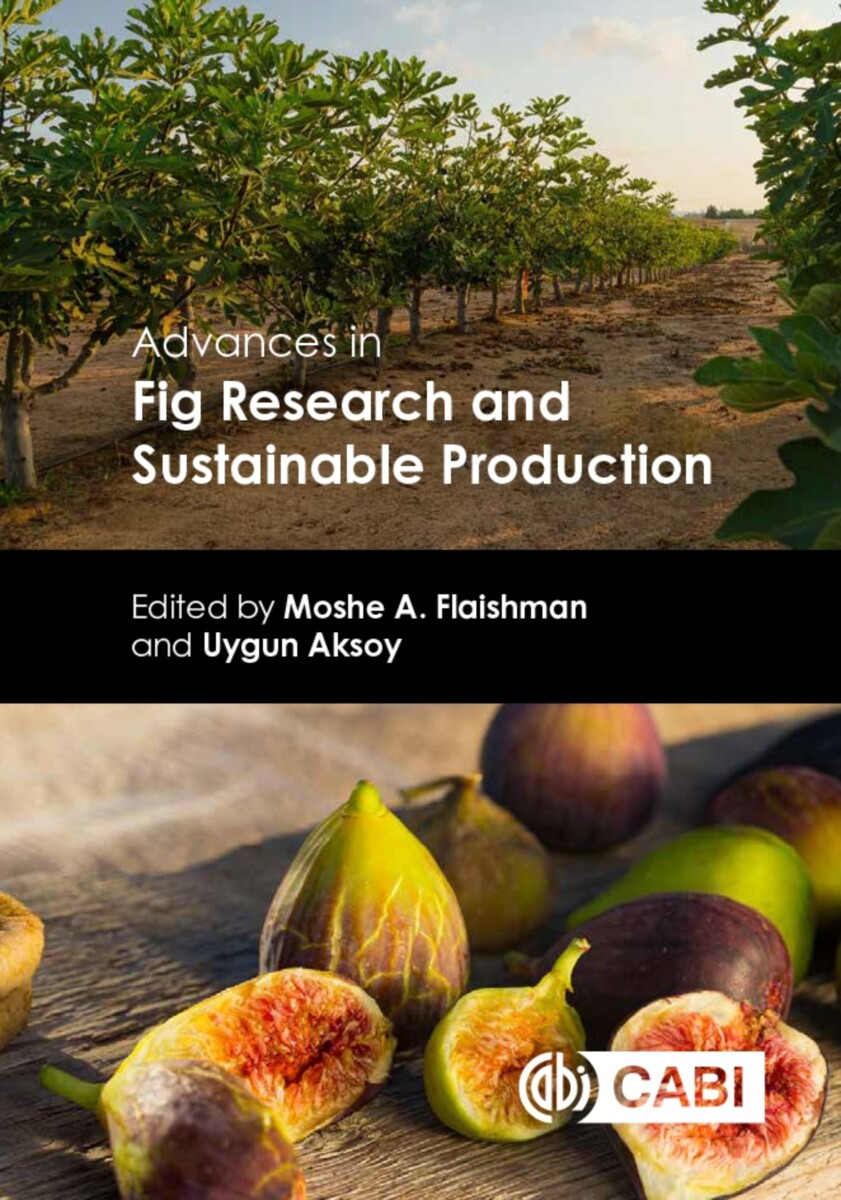Advances in Fig Research and Sustainable Production
- Publisher
CABI - Published
12th August 2022 - ISBN 9781789242478
- Language English
- Pages 536 pp.
- Size 6" x 9"
The common fig (Ficus carica L.) is one of the oldest fruits domesticated by humans, and is native to southwest Asia and the Mediterranean. Figs have been associated with health and prosperity since ancient times. They are rich in fibre, potassium, calcium, and iron, as well as being an important source of vitamins, amino acids, and antioxidants.
In recent years, increased consumption has caused fig production to shift to new countries such as Mexico, Brazil, India, and China. However, fig is a challenging fruit crop to grow. It is susceptible to insect pests and diseases as well as injuries from abiotic stress during fruit development and ripening. As a delicate fruit it also requires complicated postharvest procedures and climate change presents additional challenges.
Comprising 29 chapters written by international experts, the book includes sections on:
- History
- Biology and Orchard Management
- Fruit Ripening and Postharvest Management
- Pests and Diseases
- Omics Analysis
- Cultivars and Breeding
- Products and Trade
Part I: The Fig History
1: Fig from History and Tradition to Scientific Research
2: The Common Fig (Ficus carica L.) Remains in the Archaeological Record and Domestication Processes
3: Fig in History and Art
Part II: Fig Biology and Orchard Management
4: Fig morphology and development
5: Ficus–Wasp Mutualism with a Special Emphasis on Ficus carica
6: Fig Propagation
7: Fig Orchard Establishment
8: Soil Management, Fertilization, and Irrigation
9: Horticultural Practices under Various Climatic Conditions
10: Sustainable Farming Systems and Organic Fig Production
11: Robotics and Remote Sensing in Orchards
Part III: Fig Fruit Ripening and Postharvest Management
12: Fig Fruit Ripening and Maturation
13: Harvest and Post-Harvest Physiology and Technology of Fresh Fig Fruit
14: Post-harvest Handling of Dried Fig Fruit
Part IV: Fig Pests and Diseases
15: Pests of Fig Trees
16: Fig Pathogens: Viruses, Viroids and Phytoplasmas
17: Fig Diseases
18: Post-Harvest Fig Diseases and Pests
19: Mycotoxins in Fig
Part V: Fig Omics Analysis
20: Fig Genetics, Genomics and Transcriptomics
21: Fig Flavor
22: Human Nutrition of Ficus carica
Part VI: Fig cultivars and breeding
23: Fig Varieties
24: Conventional and Molecular Breeding in Fig
Part VII: Fig Products and Trade
25: Fig Products from Tradition to Future
26: Traditional Ethno-Medicinal Usage of Ficus carica
27: World Fig Production and Trade
28: Fig Marketing Strategies
29: Conclusions and Future Research
Moshe A. Flaishman
Moshe Flaishman obtained his MSc. from the Hebrew University in Israel, and his Ph.D from The Tel Aviv University. In addition to his permanent position at the Volcani Institute, Israel, he lectures at the Hebrew University. In the last 20 years he has conducted in-depth investigations into the ability to influence the development of deciduous fruit trees growing in the hot climate of Israel, by integrating physiological, biochemical, molecular and genetic approaches. He has developed research programs in apple, pear, peach and figs. His research focus is on horticultural applications and breeding for sustainable tree production. He is the Chair of the Fig Working Group on the ISHS.
Uygun Aksoy
Uygun Aksoy obtained her MSc. and Ph. Degrees at Ege University, Turkey. Being located in the center of the world’s main fig production region, Aegean, she started working on figs with her Ph D. thesis. In addition to her permanent position at Ege University, she lectured at a Masters Degree Course on Mediterranean Organic Agriculture in the Mediterranean Agronomic Institute of Bari (Italy) between 2000 and 2015.
Uygun Aksoy worked closely with the Aegean Exporters’ Associations, Ministry of Agriculture, and Ministry of Economy as a non-paid consultant in Turkey, participated in discussions in Codex Alimentarius and the European Union regarding mycotoxins in figs. Also worked with the WG preparing UN/ECE standards for dried and fresh figs. Currently, she leads monitoring and training on prevention/reduction of aflatoxins and ochratoxin A in figs.


